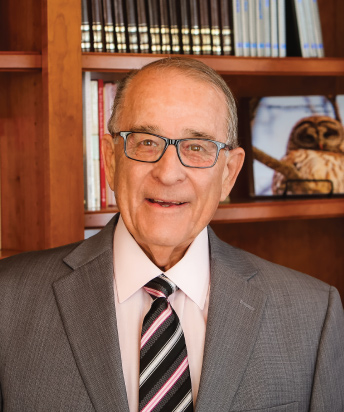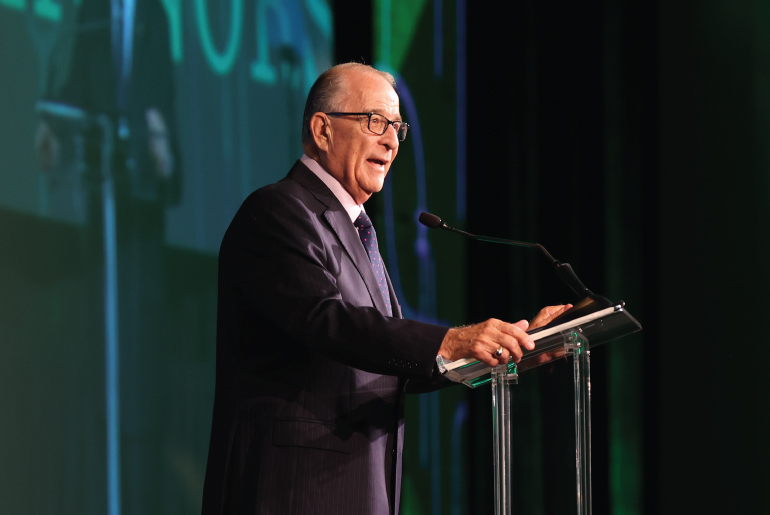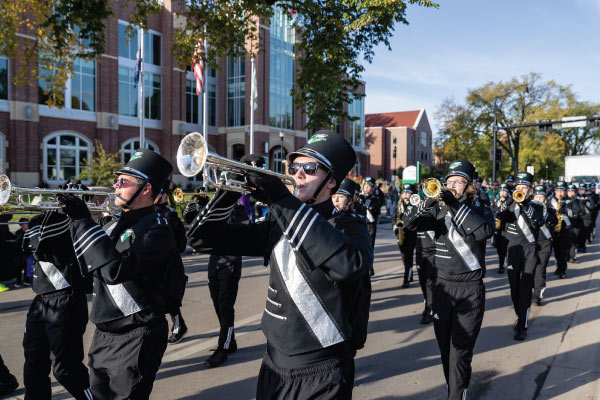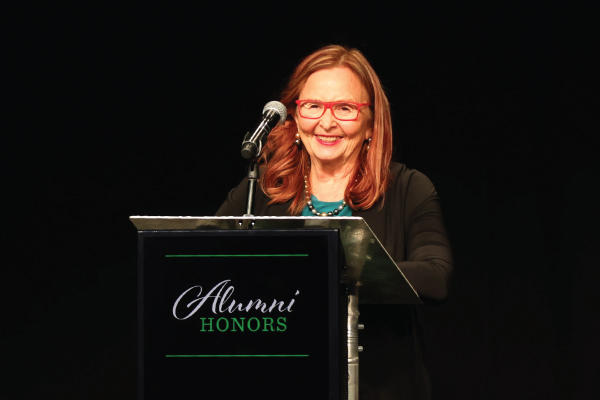2023 Alumni Honors: Dr. Robert Boyd
‘Mr. UND’ spent a long career as Vice President for Student and Outreach Services at the University of North Dakota hyper-focused on what was best for students.
Dr. Robert Boyd, ’74, ’79, who spent much of his career at UND in various student-focused roles, has nominated people for the UND Alumni Association & Foundation’s highest honor. He never expected he would be chosen to receive a Sioux Award for Distinguished Achievement & Leadership himself.
Bob, who long served as Dean of Continuing Education and Vice President for Student and Outreach Services, was driving when he received a call from DeAnna Carlson Zink, CEO of the UNDAAF about his selection. He says he called her back because he feared that the shock of the moment had prevented him from expressing his full appreciation.
“I'm just very humbled,” said Bob. “I must tell you very honestly I can think of several names that would be more deserving and some I've even nominated, but I'm just very appreciative and tremendously honored by it.”

MR. UND
Dubbed “Mr. UND” by President Robert Kelley – one of four presidents he worked with during a 32-year UND career – Bob was widely known for his fierce passion for UND and his advocacy for students.
Whether bringing technology to bear on higher education, creating opportunities for part-time students, focusing on student health and wellness, advocating on behalf of minority students, or improving student financial know-how, Boyd’s tenure saw great improvements in the student experience on the Grand Forks campus and beyond.
An advocate for a liberal education, he often told students, ‘Remember that the liberal
arts are liberating. They are the ones that liberate your mind from prejudices.’”
Boyd took his studies seriously as a teen growing up in Rock Lake, North Dakota. He
excelled in math and science and became the first in his family to receive a 4-year
college degree.
Years later, while addressing students at winter commencement in 2005, Boyd would reminisce about how he learned the importance of community from his hometown of 250 people. How the clock repairman/barber told him that the tiny spring of a grandfather clock was just as important as the large brass sprocket and how the store owner who gave every child a free lollipop taught him that running a business was about more than making a profit and that treating even the least among his customers well was the right thing to do.
Boyd applied those lessons to his career after earning undergraduate degrees in mathematics and chemistry from Minot State University. He taught high school math in Mohall, North Dakota and then in Minot. In 1973, he was named assistant principal at Minot High School and began taking master’s degree classes in Grand Forks. He then was named principal in 1976. After two years, he returned to UND to work on his doctorate with the intention of returning to Minot when completed.
Instead, he was offered the position director of the Extension Service at UND. Six months after taking that position, the dean of Continuing Education resigned, and Boyd was named dean after a national search. In 1998, he was named Vice President for Student and Outreach Services, a position he held until 2010 when he accepted a presidential assignment and then fully retired in 2011.
Remember that the liberal arts are liberating. They are the ones that liberate your mind from prejudices.
HIGHLIGHTS
It is futile to ask Boyd to pinpoint one highlight from that 30-plus-year career, but he did boil it down to a handful of things that stood out for him, including improving access for part-time learners, utilizing technology for remote education, advocating for Native American students (establishment of the American Indian Student Services Center), promoting holistic wellness (development of the Wellness Center), and chairing two task forces related to the move to Division I athletics.
However, Boyd said he had made it a personal policy to always say “yes” to a presidential
ask, so he took on the role. When the task force recommended that UND make the jump,
Boyd was then invited to chair the committee on how to make it happen.
That “always say yes” policy also led him to a leadership role in one of the most
pivotal moments for the University in its history. After the Flood of 1997 forced
students and faculty to flee Grand Forks while causing $75 million in damages, Boyd
set up a toll-free telephone line manned by faculty, staff and students to take calls
from those who had left, allowing them to create a database of where everyone was.
Within days, Boyd was asked to do everything he could to avoid having to cancel summer
school classes. He accomplished that and then focused on fall enrollment.
“We can't have another year of even fewer enrollment, so we have to stop the bleeding,”
said Boyd of his thinking at the time. “So, we did everything that we could in terms
of marketing to encourage students to come back to campus. … The whole university
played a very important role of saying, ‘You're all welcome to come on back, we are
coming back to life.’ And we succeeded that first year in stopping the bleeding.”
Boyd said after that, they set a goal to grow to an enrollment of 13,000 (it had been
11,300 in fall 1996) and, as was often the case when “Mr. UND” was put in charge,
they succeeded.



